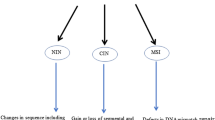Abstract
In humans, it is thought that the X-inactivation phenomenon occurs no matter how many X chromosomes are present, and that only one of them remains active. Nevertheless, individuals who have an abnormal number of X chromosomes show a wide spectrum of abnormalities, which increase with the number of X chromosomes present in a given individual. It has been shown that the inactive X chromosome in female mammals is distinguished by a lack of histone H4 acetylation, and that this could be used as an accessible marker for distinguishing between Xi and Xa in spreads of metaphase chromosomes. We studied three X-polysomic patients for the presence of active chromatin by analysis of histone H4 acetylation on unfixed metaphase spreads. Using antisera to H4 acetylated at lysines 16, 8 and 5, respectively, we observed frequencies different from those expected from cells with only one underacetylated X chromosome. In particular, when antiserum to H4 acetylated at lysine 16 was used about 90% of the cells showed acetylation of all X chromosomes. This suggests a possible disturbance in the deacetylation process, probably due to the presence of multiple Xs.
Similar content being viewed by others
Author information
Authors and Affiliations
Additional information
Received: 25 April 1997 / Accepted: 15 March 1998
Rights and permissions
About this article
Cite this article
Leal, C., Ayala-Madrigal, M., Figuera, L. et al. Histone H4 acetylation analyses in patients with polysomy X: implications for the mechanism of X inactivation. Hum Genet 103, 29–33 (1998). https://doi.org/10.1007/s004390050778
Issue Date:
DOI: https://doi.org/10.1007/s004390050778




